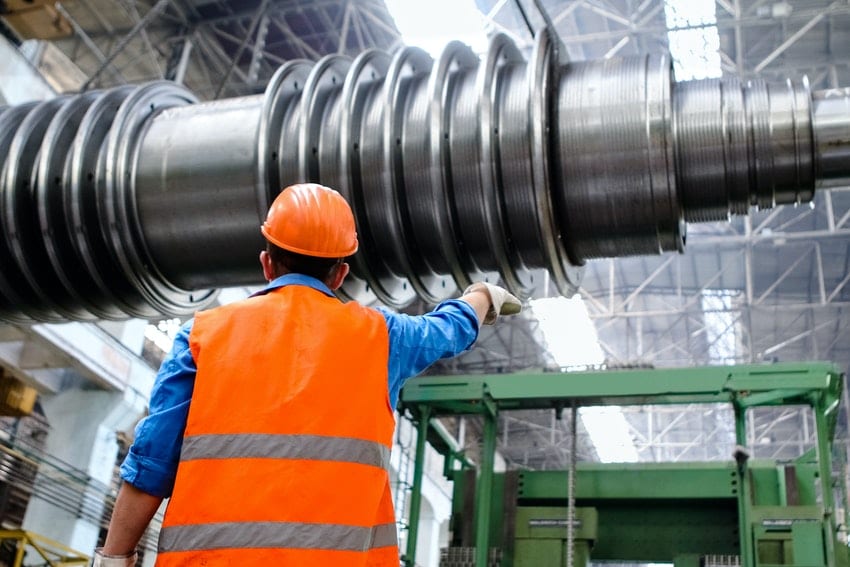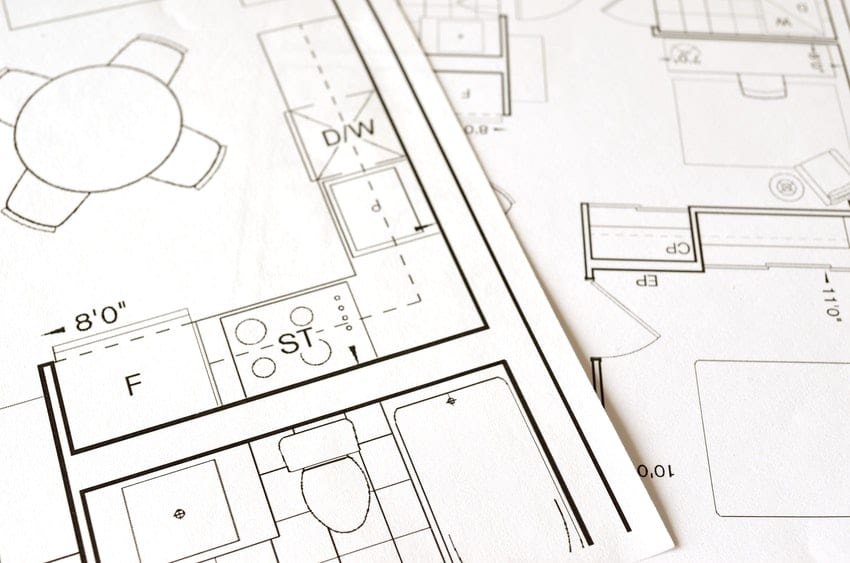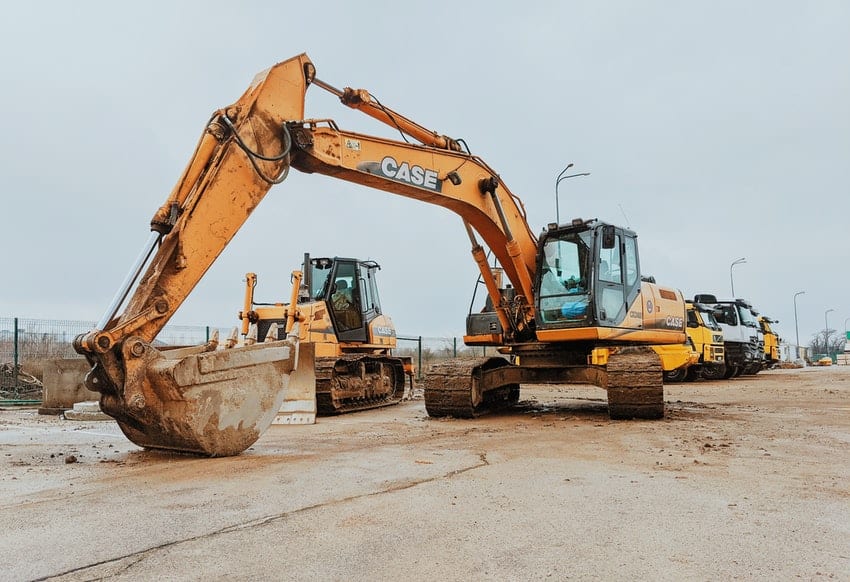Compared to the severe difficulties and obstacles faced by the hospitality and travel industries, the engineering and construction sector stepped out of the pandemic crisis in a better state.

The ability to maintain stability provides the space for making more ambitious changes and setting higher aims, Deloitte observers note. In particular, there's room for sustainable growth and new experiments in the field.
As the McKinsey report states, this year pushes the construction trends forward, moving the industry towards greater digitalization.
In addition, the growing demand for public consumption and connected construction are the parts of the new reality for the sector.
What’s more, the development of 3D models and sustainable materials make these trends more affordable and accessible for companies of different sizes. All this calls for considering the technological innovations in construction more seriously than ever before.
Even though construction is a generally under-digitized sphere, the pandemic crisis calls for investing in technological solutions for gaining a competitive advantage in the sector.
If you’re eager to bring your construction to the next level, this guide is for you! In this overview, we’ve selected the top 7 construction industry trends in 2022 and demonstrated the indispensable presence of software development in the construction industry of the new age.
7 Construction Industry Trends for 2022
- Remote models
- Safety
- Cost-effectiveness
- Green living
- Digital investment
- Modular construction
- 3D printing
Remote Construction
It’s hard to build a house remotely, but the construction trends in 2022 facilitate this task with drones and blockchain technology capabilities.
Drones can detect safety issues and, this way, optimize the costs spent on insurance. In its turn, blockchain technology facilitates delivering administrative tasks, including better accuracy and higher processing speed of transactions and task management.
Even the inclusion of a mature management system only can bring a substantial advantage in the construction management process.
Use Case
In 2017, we at Intellectsoft assisted AF Gruppen, the leading Norwegian engineering and construction company, in developing an ERP system for better management of projects, partners, and assets.
We aimed at delivering construction software development that illustrates the idea of remote management the best. A single platform works as the labor-management portal and includes real-time reporting, communication with on-site inspectors, and connection to truck drivers.
In the pandemic times, the established system proved to be reliable to maneuver and manage numerous processes for this huge construction company like AF Gruppen.
Safety
The COVID-19 spread has dramatically changed the perception of a healthy working environment, and the construction industry is not an exception.
When it comes to construction industry trends, the new measures include sticking to hygienic norms and maintaining the workers safe.
In software terms, this means the inclusion of touchless technology and stronger equipment-based connection with insurance agents and workers on site.
For maintaining safety on-site, construction companies can also introduce wearables and invest in healthcare software technologies.
These construction software solutions should include enhanced tracking and reporting to check the conditions in real-time and deliver useful insights to the connected stakeholders.

Use Case
OrigamiRisk SaaS product is the glaring example of maintaining the safety of workers on-site. With a platform of this type, it’s possible to reduce the number of incidents significantly.
The specifically designed EHS management software enables established mature safety culture and enhanced timely reporting. The solution’s key features include immediate reporting about the problems, proactive prevention audits, and visualization of data in a single integrated system.
This way, construction software development aims to reduce on-site risks and strengthen connectivity with insurance agents and connected doctors.
Cost-Effective Construction
As Deloitte suggests, one of the great ways to cut costs in 2022 is to invest in prefabrication design. It means relying on advanced construction materials (e.g. geosynthetics and geotextiles), along with adopting an integrated enterprise-level approach.
Moreover, connectivity within the household is on the rise. In pandemic times, the presence of technology in our daily lives allowed keeping in touch, maintaining connections, and participating in the desired activities.
Smart connectivity impacted the construction methods too: in particular, the workers can replace physical work with digital solutions.
Also, the technology can significantly facilitate communication with chat apps, online conferences, and enhanced task management. Overall, the technological solution can save time and money for the industry in many ways.
Use Case
Fieldwire’s Barrack Place is the solution that demonstrates the idea of cost-effective technology implementation the best. This next-generation building project addresses several construction trends, including remote models and safety.
Fieldwire introduced advanced field management that allows collecting all the essential data in one place. Among the interesting features of the project, the solution lets work on drawings offline and make edits on the fly so that each team member has access to the latest version of the plan.
The database includes more than 10,000 drawings shared through hyperlinks for easier navigation. This solution significantly improved the construction project by saving time on numerous negotiations and cutting costs of severe miscommunication mistakes.

Green Living
New client demands include greater sustainability, according to the McKinsey report on the construction industry trends. In this context, the question of energy consumption is sharp, considering the growing self-quarantine cases and remote work models.
In this context, smart house devices work well for cost optimization and increasing the comfort of households. Moreover, the construction trends towards greener architecture include using eco-friendly materials and minimizing carbon footprints.
People want to live closer to nature, enjoy family breakfasts in the garden, and lead sustainable lives — and that’s the demand construction companies should meet.
In this context, living materials are gaining momentum. These biological, eco-friendly compounds can literally grow themselves, providing the place for interesting experiments and construction ideas. In general, the technologically empowered solutions here deal with the shortage of materials, which is a common problem for the industry these days.
Use Case
Addressing the need for sustainability, Kai Tak Site 1A, constructed under the Hong Kong governmental project, includes the solutions for renewable energy, energy conservation, district cooling system, water preservation, fuel reduction, and many more.
The Housing Authority’s approach relied on sophisticated research and development (R&D) before building and included a complex set of sustainable incentives at once.
The role of software in the project was outstanding, starting from using high-tech innovative eco-friendly materials to incorporating the enhanced project management system to deliver the project timely and at the full scope.
Digital Investment
The number of startups and new funding models has increased, and the industry will inevitably incorporate them into its landscape. For gaining a competitive advantage, it’s recommended to search for ecosystem partners who will invest in the connected construction.
Technologies allow making more sustainable solutions and innovative decisions. Moreover, it’s more cost-effective to focus on target niches and segments rather than investing in different directions simultaneously.
The digital investment allows making unexpected alliances that may bring many interesting things and competitive advantages to the market. Deloitte observers highly recommend E&C companies to focus on targeted consolidation.
Use Case
Otonomo is a software firm that delivers solutions focused on connected construction and digital investment. Introducing a wide set of solutions, the technology provider enables the digitalization of all the processes in the construction industry.
The equipment manufacturers can use embedded telematics for delivery, and the established ecosystem serves as a favorable environment to manage several construction-related risks.
Among the practical improvements possible, Otonomo assists in theft prevention and recovery, accident reconstruction, insurance underwriting, construction equipment fleet management, responsive suppliers, and analytics of economic trends.
In general, the solution perfectly represents the idea of the digital construction of the new age and provides all the advantages it promises.

Modular Construction
In essence, this type of construction means building the set of typical modules, or sections. This method is useful and successfully supplements the above-mentioned construction trends for 3D printing and eco-friendly building.
Moreover, modular construction deals with the cost pressure effectively, which is the new post-pandemic reality in the construction industry.
Use Case
Chawathil Cultural Center, built by Metric Modular, is the most illustrative example of modular construction that connects nature and technology organically.
In this project, the constructors made an open-air gathering space with enhanced functionality that includes 4 building modules for office facilities.
The company relies on this type of construction in numerous activities, working on shifting the idea of modular design from “a bunch of stacked boxes” to high-tech solutions that look like traditional buildings.
In terms of software, the company adopts smart scheduling, planning, and managing on-site processes, along with using sustainable materials and applying technologies that facilitate construction in any location.
3D Printing
The technology is still applicable, especially when it comes to small-scale processes, complex tasks, and the need for custom details. 3D prints make the construction faster and more accurate during the design transition to real-life objects.
Another set of advantages refers to resource optimization: 3D printing requires less physical work and provides more sustainability.
Use Case
3D prints are getting popular, and one of the illustrative projects in this dimension is the Mexican Museum in California, renovated by Webcor Builders.
In essence, the case study had a limited budget and needed an innovative solution in the unfavorable starting conditions. There were risks of constructability, shoring, and waterproofing because of old high elevator walls.
The application of 3D models enabled determining the threats of these walls and making timely adjustments without putting the entire project at risk.
3D modeling served as an enhanced visualization tool and a form of physical representation simultaneously — and these two features helped the team overcome the risk of failure.

How to Invest in Construction Software Development Wisely?
The new construction is digital-normal, but the task of getting reliable and high-quality technical support can be tough. We are here to help! Intellectsoft is a software development partner for businesses worldwide.
We have already assisted numerous companies of different sizes and representing various industries. For the construction companies, we’re ready to offer a set of software development solutions that address the chosen construction industry technology trends. Check the list of our sector-specific capabilities!
We arranged a webinar dedicated to digital transformation in the construction industry. In this video, you can find all the answers, additional details and get practical recommendations.
If you need a personal consultation, ask our experts directly! We’d be glad to discuss your project, set the strategic aims, and pick the software development solution that will bring the most benefit.